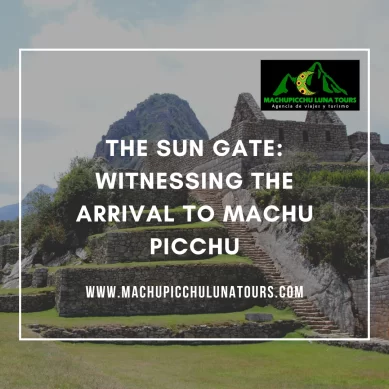Welcome to a journey of mystery and wonder as we explore the enigmatic ruins of Waqrapukara, a breathtaking ancient fortress nestled high in the Peruvian Andes. This often-overlooked gem is a testament to the engineering prowess and cultural richness of the pre-Inca civilizations that thrived in this region.
The name Waqrapukara, which translates to ‘horn-shaped fortress’ in Quechua, hints at the site’s distinct architecture and strategic location. In this article, we will delve into the fascinating history of this lesser-known marvel, unveil the secrets it holds, and inspire you to embark on a remarkable adventure to witness firsthand the awe-inspiring beauty of Waqrapukara.
Unearthing the rich history of Waqrapukara: The story of a forgotten civilization
Waqrapukara, a hidden gem in the Peruvian Andes, has a history as fascinating as its more famous counterpart, Machu Picchu. This ancient fortress, built by the pre-Inca Canchis civilization, remains shrouded in mystery. Its remote location, high in the mountains, protected it from the ravages of time and conquest.
Located approximately 60 kilometers (37 miles) southeast of Cusco, Waqrapukara served as an important religious and ceremonial site. Its unique architecture and breathtaking views have inspired historians and archaeologists alike. While the Canchis culture has largely been forgotten, their legacy lives on through this enigmatic fortress.
The Canchis were a powerful ethnic group in the region before the rise of the Inca Empire. Waqrapukara’s construction demonstrates their remarkable engineering skills and understanding of the landscape. Its strategic position made it a formidable stronghold, providing a clear vantage point for surveillance.
Waqrapukara’s name, derived from the Quechua language, means “horn-shaped fortress”. This title aptly describes the site’s peculiar architecture, featuring two massive rock formations resembling horns. The fortress was built around these natural structures, integrating them into the design.
The site’s spiritual significance is also evident in its layout. Waqrapukara features various platforms, plazas, and enclosures, some believed to have been used for astronomical observations. These structures reflect the Canchis’ deep connection with nature and their understanding of celestial phenomena.
Despite being overshadowed by Machu Picchu, Waqrapukara is slowly gaining recognition. Researchers continue to unearth valuable information about the Canchis civilization and their architectural prowess. Recent excavations have revealed intricate stonework, further testament to the ingenuity of this ancient culture.
With each new discovery, we gain a deeper appreciation for the people who once called Waqrapukara home. Exploring this hidden marvel offers a unique opportunity to connect with a forgotten civilization and admire their remarkable achievements in engineering, astronomy, and spirituality.

Architectural ingenuity and spiritual significance: Decoding the secrets of the horn-shaped fortress
Waqrapukara’s architectural mastery is evident in the seamless integration of natural rock formations and man-made structures. Located near the Sacred Valley, the fortress represents the pinnacle of pre-Inca engineering and spirituality. The horn-shaped outcroppings, which inspired the site’s name, are just the beginning of its architectural wonders.
The main complex of Waqrapukara includes a central plaza, terraces, and numerous enclosures. Some of these structures were built by the Incas after the conquest of the Canchis people. The fortress, built on a steep slope, demonstrates the Inca and Canchis understanding of the landscape and the importance of adapting to it.
One of the most striking aspects of Waqrapukara is the series of platforms, or andenes, that cascade down the mountainside. These terraces not only provided agricultural space but also reinforced the site against erosion and landslides. The skilled use of water canals and drainage systems further highlights the Canchis engineering prowess.
Waqrapukara’s spiritual significance is evident in its design and layout. The fortress features several enclosures believed to be ritual spaces, where the Canchis, and later the Incas, performed ceremonies and offerings. Some of these enclosures align with solstices and equinoxes, revealing the culture’s advanced astronomical knowledge and connection with celestial events.
The fortress’s remote location adds to its spiritual allure. Waqrapukara’s isolation suggests it may have been a sacred pilgrimage site, reserved for the most devout followers. The trek to the fortress was likely a spiritual journey, signifying a deep commitment to their beliefs.

Embarking on the ultimate adventure: A comprehensive guide to trekking Waqrapukara’s majestic landscape
Trekking to Waqrapukara is an unforgettable adventure, offering an immersive experience in Peru’s awe-inspiring landscapes. Before embarking on this journey, it’s essential to prepare for the trek and know what to expect.
There are two primary routes to reach Waqrapukara: one from the village of Sangarará and another from the village of Huayqui. The former is a 10-kilometer hike, while the latter is a shorter 8-kilometer trek. Both routes traverse picturesque scenery, from rolling hills to rocky paths and steep ascents.
As Waqrapukara sits at an altitude of approximately 4,300 meters (14,107 feet). Therefore, it’s crucial to acclimatize to avoid altitude sickness. Spend a few days in Cusco or the surrounding area, adjusting to the elevation and exploring nearby attractions.
The best time to visit Waqrapukara is during the dry season, between May and November. These months offer clear skies and favorable trekking conditions, allowing you to fully appreciate the site’s beauty.
Pack essentials like comfortable hiking boots, warm clothing, sun protection, and plenty of water. A knowledgeable local guide can enhance your experience, providing insights into the area’s history and culture. It’s also possible to arrange a camping trip for a more immersive adventure.
Finally, don’t forget to bring your camera. Waqrapukara’s breathtaking landscapes and unique architecture provide countless photo opportunities, capturing the essence of this hidden marvel. The memories and stories you’ll create during this once-in-a-lifetime trek will stay with you forever.
After visiting Waqrapukara, consider extending your adventure to Vinicunca Rainbow Mountain. This stunning geological formation, with its vibrant colors and dramatic vistas, is another must-see destination in the Peruvian Andes. With its magical landscapes and rich history, the Cusco region is a treasure trove waiting to be explored.












